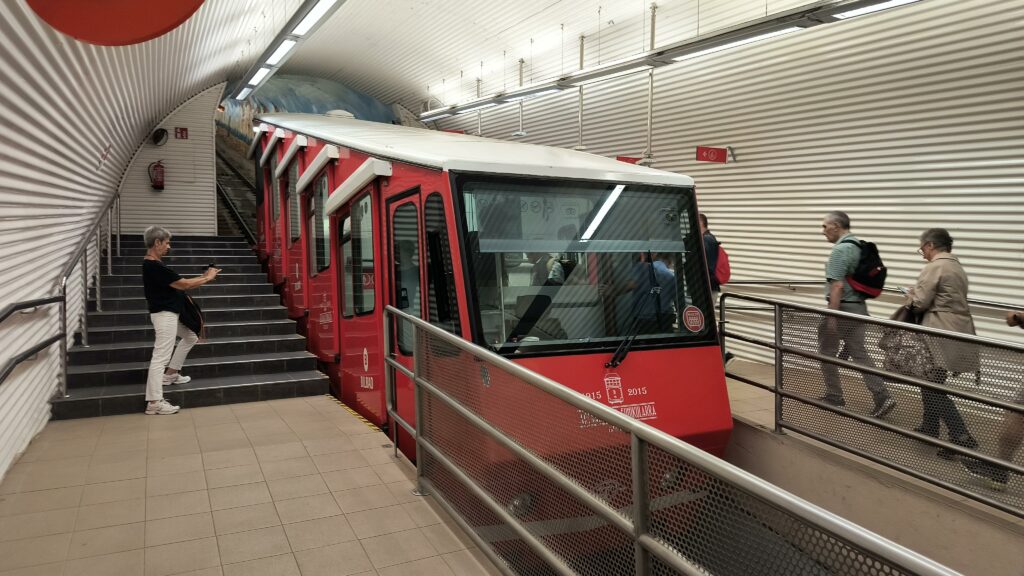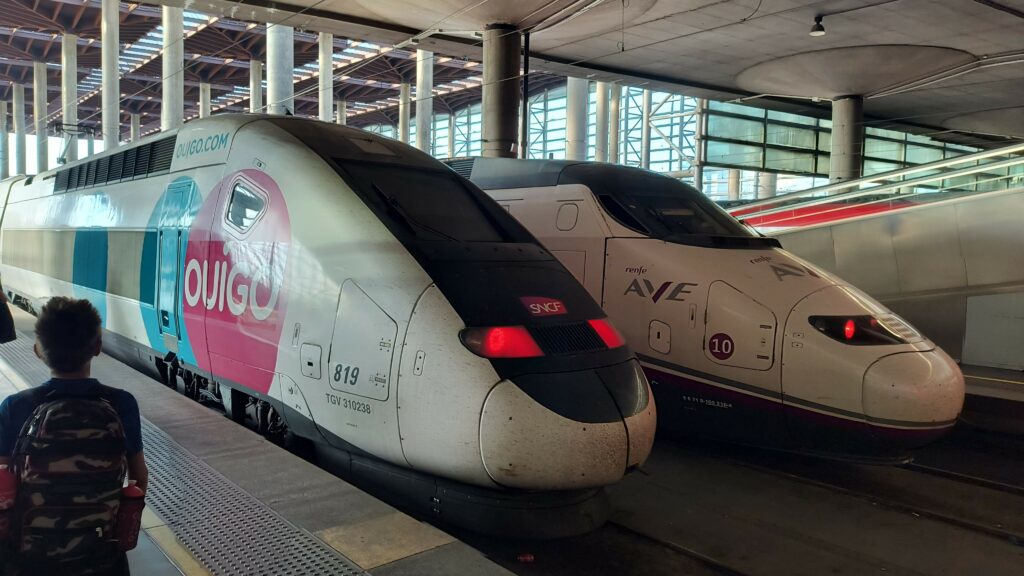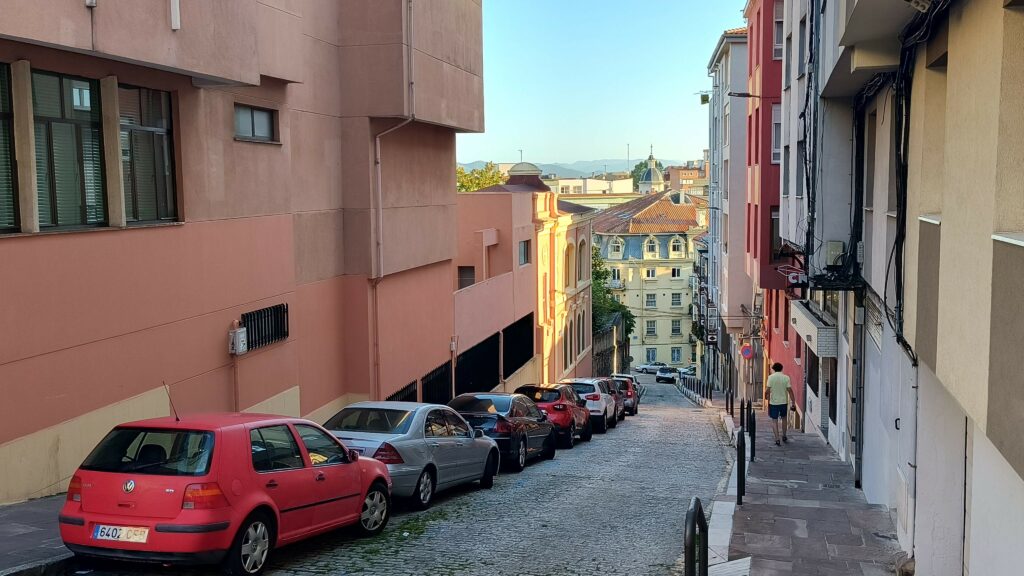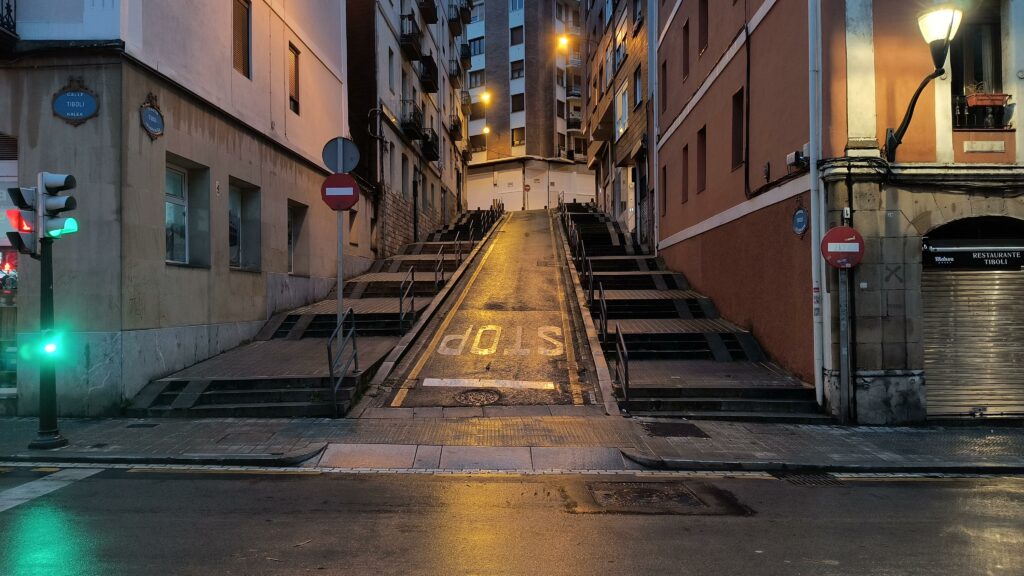8 Reasons Not to Own a Car in Spain
There are most certainly more than eight reasons, but these were the things that throughout our trip constantly reminded us that it’s just easier to not have one.
1. Public transportation is truly the most convenient way to get around.
Within the city: There are plenty of bus, tram, or subway options. Cable cars too if the terrain requires it! There are usually several different options for reusable tickets that cater to different needs. Taxis are everywhere and are official, regulated, and very reasonably priced. There usually are several rideshare options too.


Intercity: Flying is one obvious option, though it’s pricier. Trains are amazing, especially when there is a high-speed train available, for example between Madrid and Barcelona. A train gets you there in 3 hours as opposed to driving for 6-7 hours straight. Fares vary, so it’s best to book a little in advance, and there are many options throughout the day. Check trainline.com to see everything available (trains are operated by several different companies) then go to the actual company’s website to purchase.
I booked a round trip Madrid-Barcelona with Ouigo: 2.5 hrs one way, kids aged 4-11 pay €7 flat rate, adults were about €25 each with additional discounts for students and seniors. It was a double-decker train, food and entertainment available for an additional fee, and large luggage cost a little extra.
We did not require entertainment: Spotting castles on the hills along the way and watching the train speed reach 300 km/hr (186 mph) was fun enough!
There’s a quick security check at the station before you board: just send your luggage through an x-ray machine, and it was a breeze. Our train station experience was very smooth both ways.
2. Rental cars are cheap
If you just absolutely have to go on a road trip, car rentals are cheap and readily available. They can also set you up with a teeny tiny car, which is important. Teeny tiny cars – by Texas standards of course – are the bulk of their fleet anyway.
3. Parking is sparse
Parking anywhere in the city is a major headache. Now we only drove around the northern region, so I’ll mostly speak for that, but I’m going to go ahead and assume it’s probably worse in larger cities down south. Parking in the city is sparse. Very sparse. Some hotels have parking garages, some don’t. Sometimes the only option is to park on the outskirts, paid of course, and get around the city on foot/public transport.
Our Bilbao hotel had a parking garage, but it was full. We circled the nearby streets for a while until we found a spot on one of the streets. Then we had to carry all our stuff to the hotel. We did get the hotel parking spot the next day… for 27 euros/day.

4. Garages are tight
So you found a parking garage – but will you dare to park? The parking spaces are really tight – again, by Texas standards – and even though we had a smallish car (couldn’t get a teeny tiny with 5 people) it was a bit stressful – circling around to get a spot that was big enough for us to be able to get out of the car and not immediately get the car scratched.
Later on, at our last hotel in Madrid the host actually recommended we forgo the hotel parking since we already got a spot in the street. He invited us to take a look at the garage if we’d like to, but it was very very very tight.
We also got to experience parking in Cantabria and Asturias: all cities have underground parking garages at 18-25 a pop. If you are driving and see a nice little plaza, chances are there is an underground parking garage under it, just need to find the inconspicuous entrance! A quick highlight here is the parking garages are super easy to use with a card that you get at entrance then use to pay at exit, and some garages simply read your license plate then charge you based on that when you leave.
5. Car-restricted areas
Most cities centers are at least partially car-restricted. This means only authorized vehicles are allowed: residents or delivery vehicles with permits. Some more than others, but most places you actually want to be – historic plazas, streets with all the shopping dining, parks – you can’t drive through. Which is exactly why those areas are so nice. For example, Bilbao has car-restricted zones sprinkled everywhere, and Oviedo’s entire historic center is off limits for cars. Check out his website for specifics by city: https://urbanaccessregulations.eu/countries-mainmenu-147/spain. On top of no-traffic streets, many other streets are one-way, which really complicates navigation if you are not very familiar with the city. The streets can also be super-narrow and winding depending on terrain.

6. Freeway conveniences inconvenient
Did I mention we are from Texas? Alrighty. We are used to freeways. Freeways are our everything. Towns, villages, Buc-ee’s, and just random gas stations and stores in the middle of nowhere – all of it “grows” around and along freeways. Freeway is king, and the infrastructure just magically appears around it. In Spain, a road is a road. It gets you from point A to point B. There are gas stations along the way and a little café or store near it, but rarely are they right there ON the freeway just waiting for you. Most of the time you have to get off and detour to a little village nearby.
I have to say we were not prepared for it. The plan was to get out of Madrid and then pick up some snacks along the way, which turned out to not be that easy. The roads were smooth, well-maintained and scenic all the way, without a barrage of billboards which I loved. The Madrid-Bilbao route through Burgos was surprisingly hilly and very scenic.
7. Gasoline prices
€1.81 / liter is almost €7 / gallon.
8. Tiny cars
Now to me this is a good thing, it was REALLY nice to get away from the huge SUVs and pickup trucks whose driver might not ever notice a pedestrian from all the way up there. It’s very un-Texan of me, I know. Smaller cars have less space and it may be a Con for some people.
This list might keep growing….